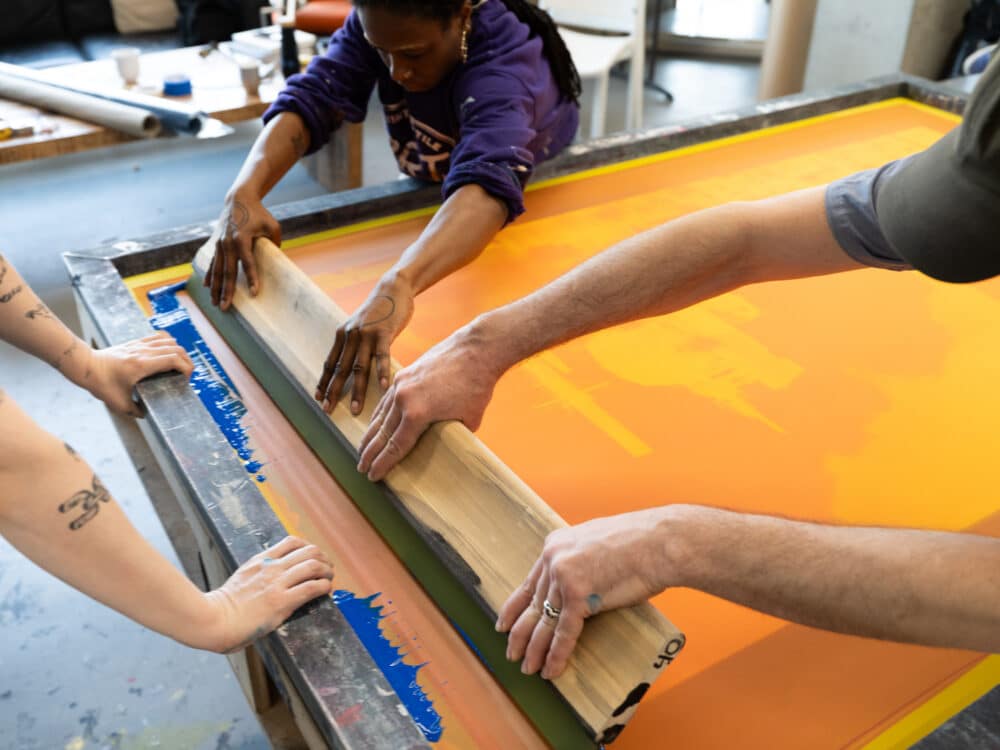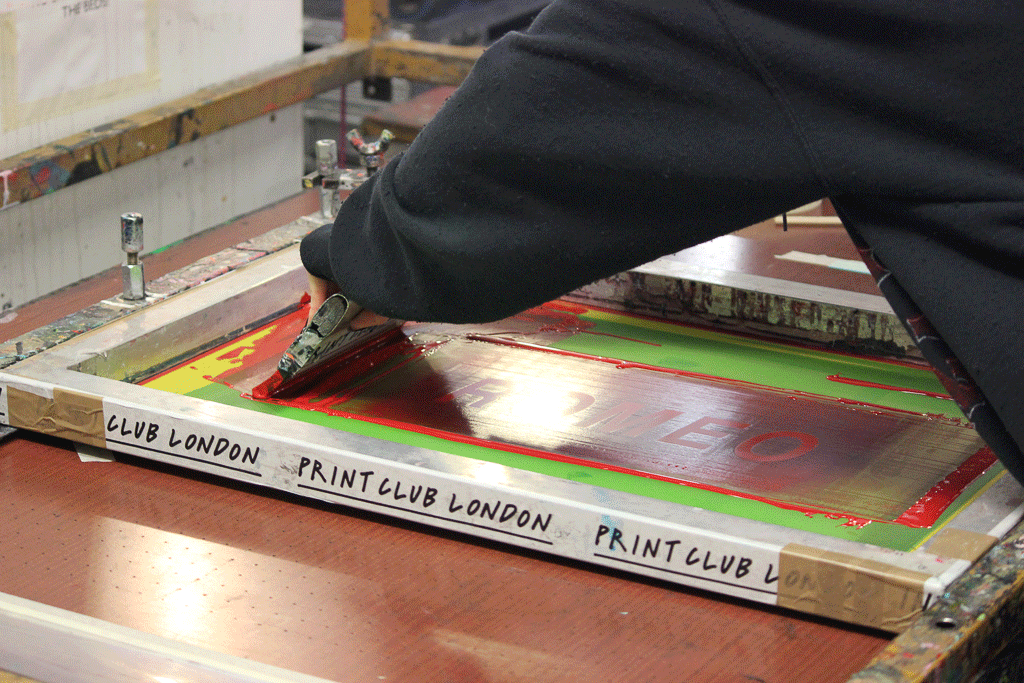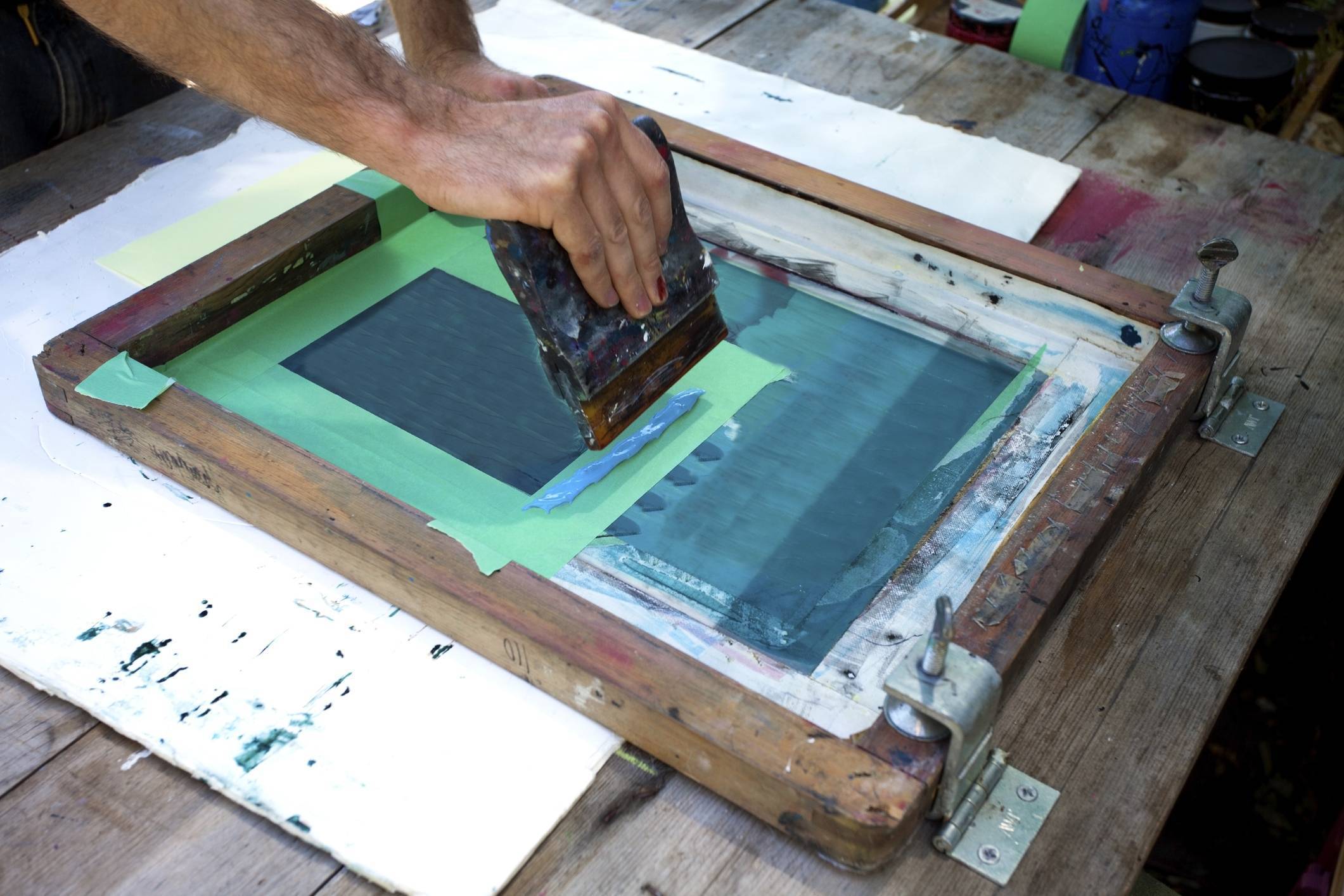ChatGPT said: Everything you need to know about 10:9 Design LLC Company and their screen printing services
The Essential Overview to Recognizing Screen Printing and Its Versatile Utilizes
Screen printing has a rich background that dates back to old times, progressing right into a sophisticated technique utilized across various sectors today. This guide explores the details of the screen printing process, describing its applications in advertising and marketing, style, and home décor - 10:9 Design contact. Comprehending these principles can open up innovative possibility for both imaginative and business projects. The adhering to areas will expose necessary suggestions and methods to boost one's screen printing endeavors
The History of Screen Printing
Although screen printing has origins that map back centuries, its evolution shows the imaginative and technological developments of different cultures. Coming from old China, the strategy was originally utilized for enhancing fabrics and later infect Japan, where it came to be integral to Ukiyo-e woodblock printing. The method shifted to Europe in the 18th century, where it gained popularity among artisans and business printers. The invention of photo emulsion in the 20th century revolutionized screen printing, permitting even more intricate layouts and better performance. Musicians like Andy Warhol additionally drove its appeal, using the medium to develop legendary jobs that mixed commercialism and art. By the late 20th century, screen printing had developed itself as a functional technique, used in style, marketing, and fine art. Today, it continues to develop, integrating electronic technology and expanding its applications throughout numerous markets.
The Screen Printing Process Explained
Screen printing changes creative visions into substantial layouts with a series of specific steps. Initially, an image is produced and then transferred onto a screen, generally constructed from great mesh textile extended over a frame. A light-sensitive solution is put on the screen, which is exposed to light, solidifying in areas not covered by the image. After cleaning out the unhardened emulsion, a pattern is formed.
Next off, the screen is placed over the substratum, whether it be textile, paper, or one more product. Ink is then pressed through the open locations of the stencil making use of a squeegee, transferring the design onto the substratum below. This procedure can be repeated for several shades, calling for separate displays for each color. The published item is treated using warmth to guarantee the ink adheres effectively, resulting in a resilient, lively layout ready for use.
Sorts Of Screen Printing Techniques

Additionally, specialized strategies, such as discharge screen printing, eliminate dye from the textile to create softer prints, while aluminum foil screen printing applies metal foil to accomplish a glossy surface (10:9 Design near me). Each technique uses distinct features, satisfying various innovative requirements and production scales, inevitably expanding the possibilities within the screen printing domain name
Applications of Screen Printing in Various Industries

In addition, the signage and advertising and marketing sectors make use of screen printing for creating distinctive displays and banners. This technique permits bold colors and complex learn the facts here now designs that catch interest. In electronic devices, screen printing is employed for applying conductive inks to circuit card, essential for component connections. The home decoration sector welcomes screen printing to produce distinctive designs on textiles and wall art. In general, screen printing acts as a critical tool across diverse fields, enhancing products with personalized and visually attractive graphics.
Tips for Successful Screen Printing Projects
While embarking on a screen printing job, cautious interest to information can significantly improve the final result. Selecting premium products is crucial; this consists of the screen, inks, and substratums. Utilizing suitable mesh counts can affect ink deposition and detail resolution. Prep work is just as important; comprehensive cleansing of displays and appropriate exposure times assure crisp prints.
Next, exact registration is critical for multi-color prints. Utilizing placement devices can help achieve accurate layering. Furthermore, testing prints on scrap products prior to production aids determine potential issues without throwing away sources.

Regularly Asked Inquiries
What Materials Are Best for Screen Printing on Fabric?
Cotton and polyester blends are perfect for screen printing on material due to their sturdiness and ink absorption. Furthermore, specialty materials like silk or canvas can create special structures and home surfaces, enhancing the overall design top quality.
Just how Do I Tidy and Maintain Screen Printing Devices?
To maintain and clean screen printing devices, one should routinely wash screens with ideal solvents, check mops for wear, oil relocating components, and store all items in a dry, dust-free setting to extend their life expectancy.
What Are the Environmental Influences of Screen Printing?
Screen printing can have considerable environmental influences, consisting of chemical waste from solvents and inks, water usage throughout cleaning processes, and power usage. Sustainable techniques and environmentally friendly materials are vital for minimizing these adverse impacts.
Can Screen Printing Be Done in the house Successfully?
Screen printing can be efficiently done at home with the appropriate materials and strategies. Hobbyists can develop quality prints, though success depends upon their skill level, tools, and understanding of the procedure included.
What Are the Prices Connected With Beginning a Screen Printing Service?

Starting a screen printing service entails costs for equipment, materials, and office. First expenses usually range from a couple of hundred to numerous thousand bucks, depending on the scale, high quality of equipment, and preferred manufacturing ability.
Screen printing has a rich background that dates back to old times, advancing right into an innovative technique used across various industries today. An additional strategy, rotating screen printing, uses round displays, facilitating continuous printing on fabric rolls, thereby improving effectiveness for large-scale productions. In addition, specialized strategies, such as discharge screen printing, remove dye from the material to develop softer prints, while foil screen printing uses metal foil to accomplish a shiny finish. In the fashion industry, screen printing is commonly utilized to create vibrant styles on apparel, enabling brands to display their one-of-a-kind designs. Cotton and polyester blends are suitable for screen printing on material due to their longevity and ink absorption.